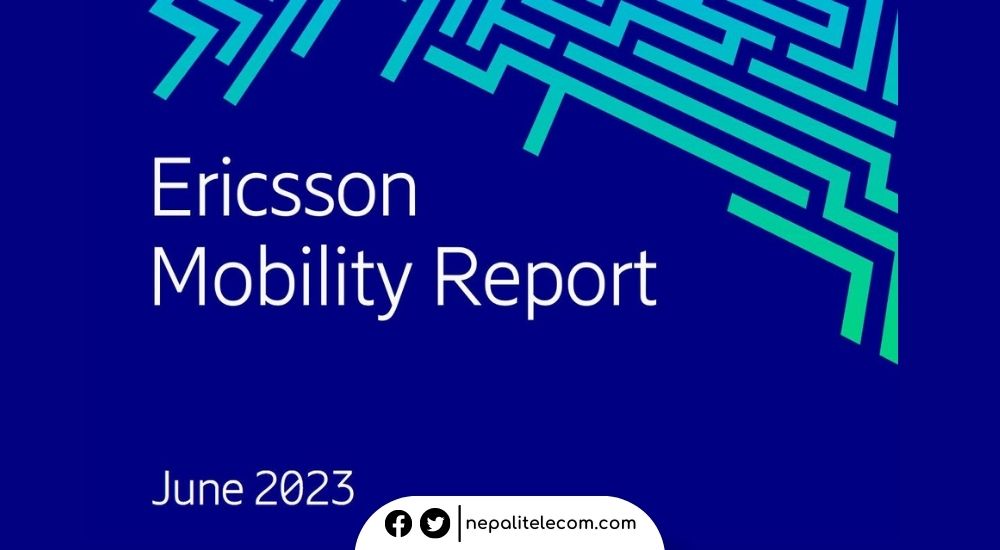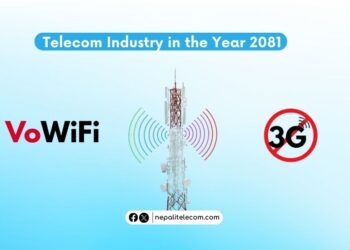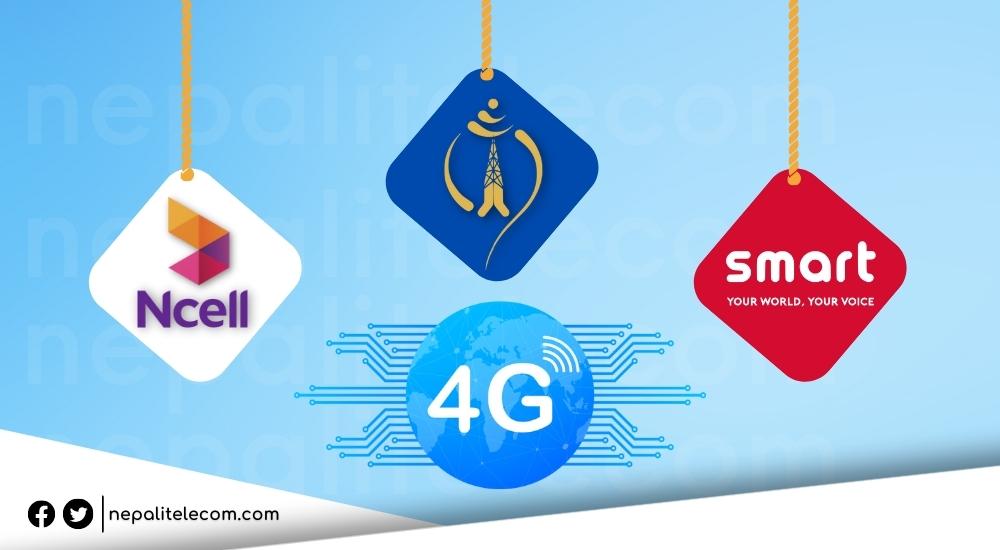The global coverage for the 5G population has reached 35% while around 240 commercial 5G networks have been launched to date, Ericsson Mobility Reports in its June edition. The top 20 5G markets also enjoyed better and growing revenue with the subscription number also growing.
5G network is currently the latest mobile communication standard and is growingly fast. Although telcos initially struggled to justify their cases, the adoption rate is increasing and gradually it is becoming ever more popular. Ericsson predicts that at the end of 2023, 5G subscriptions will surpass 1.5 billion growing by 500 million in a single year.
The fifth-generation network is about extremely high-speed data rates and it’s likely to drive up data usage for every user. It’s predicted that monthly global data usage per smartphone will reach 20 GB at the end of 2023. Likewise, mobile network providers (MNOs) are expecting higher revenues now as earnings increased by 7% in the last two years.
North America will drive up 5G subscriptions in 2023
5G subscriptions will continue to grow and reach 1.5 billion globally as MNOs increasingly deploy the high-speed network globally in 2023. Currently, 240 MNOs have launched commercial 5G services. Out of them, 35 telcos have provided standalone 5G services. Enhanced mobile broadband (eMBB), Fixed Wireless Access (FWA), gaming, and AR/VR-based services are the most common service providers offered with 5G.
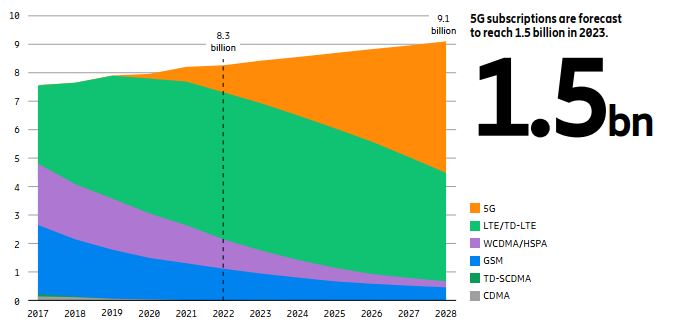
Most of the total subscriptions will come from North America. Ericsson says that the growth of 5G in North America has been “stronger than expected.” In 2022, the region represented 41% 5G penetration. In 2028, it is projected to have the highest 5G penetration at 91%. Western Europe could trial second at 88%. At the same time, global 5G subscriptions could reach 4.6 billion in 2028, that’s 50% of all networks.
And while the 5G increase is seemingly undermining 4G, the latter is still increasing somehow. The report highlights that 4G subscriptions grew by 59 million in Q1 2023 reaching 5.2 billion in total. However, the decline for the fourth-generation mobile network is said to start this year. Ericsson also claims that by the end of 2028, 4G subscriptions will fall to 3.8 billion as users migrate to 5G. But 3G is already showing its fall. In Q1 2023, 3G subscriptions declined by 85 million while GSM/EDGE (2G) subscriptions dropped by 59 million.
Check out: 2G, 3G, 4G, and 5G Networks Explained in Simple terms
5G subscriptions will grow globally
What’s now more exciting for the latest mobile network is that its subscription is rising globally. In Gulf Cooperation Council (GCC), the number of 5G subscriptions could grow from 13 to 70 million between 2022 to 2028. In the meantime, 4G could see a decline of 29 percent annually as migration increases.
Likewise, in North East Asia, 5G coverage grew in 2022 as service providers increased their investment. The region added 240 million subscriptions. The report expects NEA to have 1.1 billion 5G subscribers at the end of 2024. China, Taiwan, and South Korea are reporting a good impact of 5G in the region, and the revenues and ARPU are also looking positive, the report state.
The same is the scenario for Central and Eastern Europe, South East Asia and Oceania, North America, Latin America, etc.
5G to mark higher growth in India, Nepal, and Bhutan
In India, Nepal, and Bhutan, 5G is likely to grow further in the coming days. Since its launch in October 2022, India is seeing fast growth for the network backed by Bharti Airtel and Reliance Jio. Attractive 5G service costs and the growing availability of 5G smartphones have helped 5G subscriptions reach 10 million by the end of 2022.
The report predicts 5G subscriptions to reach 700 million in 2028. Meanwhile, 4G remains vital in the region. But it could decline from 820 million in 2022 to 500 million by 2028. Data subscriptions could grow to 1.2 billion in 2028. In Nepal, state-backed telco Nepal Telecom (NTC) is testing 5G internally and could launch the network commercially in the next few months.
Check out: 5G Begins in India | Jio, Airtel, and Vodafone Start Service
4G/5G IoT rising while 2G/3G takes a slump
The report highlights that 125 service providers globally have deployed commercial NB-IoT networks. 56 have launched Cat-M while 40 have deployed both technologies. In total, 500 million devices have been connected by these technologies at the end of 2022.
In the same year, broadband IoT (4G/5G) reached 1.3 billion connections bringing connectivity to the largest cellular IoT devices. LTE Cat-1 devices support 10 Mbps download and 5 Mbps upload speed. The report predicts that by 2028, 60 percent of cellular IoT connections will be broadband IoT 4G being the driver. This will lead to the gradual decline of legacy networks down the years.
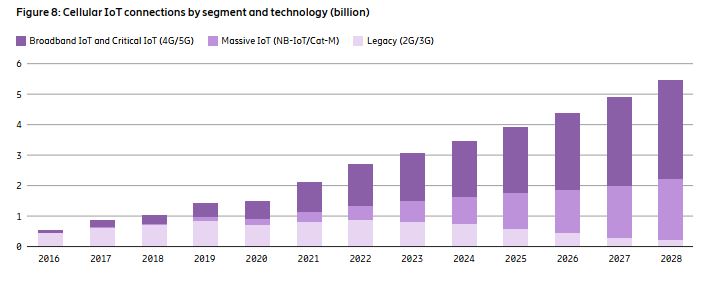
Don’t miss: 3G Vs 4G: Which mobile network should you use?
Mobile Network Traffic Has Doubled in Two years
The quarter-on-quarter mobile network data traffic stood at 7 percent between Q4 2022 and Q1 2023. The total global monthly data traffic reached 126 EB which essentially means Mobile Network Traffic has doubled in just 2 years. The MNT was just 66 EB a month in Q1 2021. The increased network traffic is driven by growing smartphone use, and better average data volume per subscription, propelled by more video content.
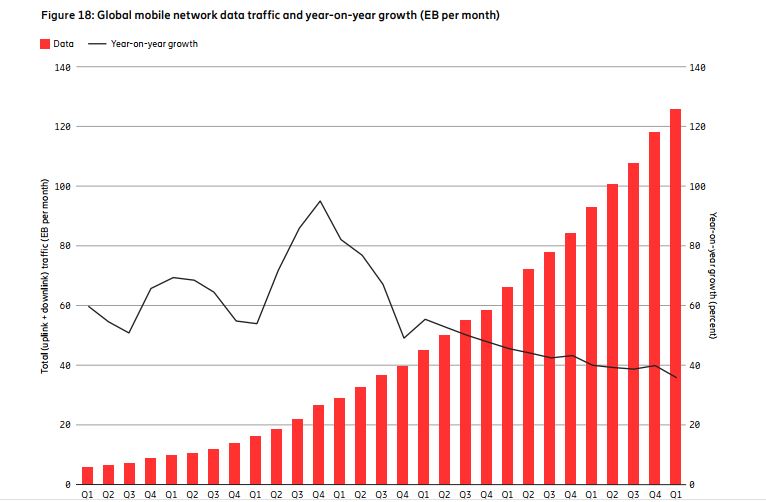
5G completely dominate all mobile data growth within 5 years
The report emphasizes that in 2027, all mobile data growth will be from 5G as 4G traffic tumbles. The global mobile data traffic except by Fixed Wireless Access (FWA) reached 93 EB a month at the end of 2022. It is predicted to reach 329 EB per month growing by a factor of 3.5 in 2028. With FWA included, it is on track to reach 472 EB monthly by 2028. What is also noticeable is that data traffic varies by region. It is due to the three main factors- device capabilities, data-intensive content, and growth in data consumption thanks to the improved networks.
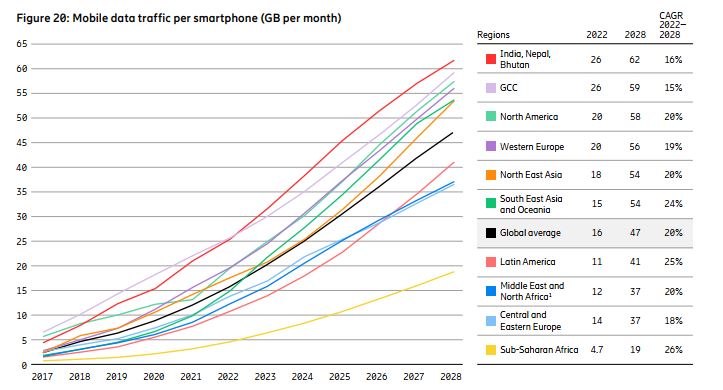
For instance, Sub-Saharan Africa has 4.7 GB of mobile data usage a month. GCC countries clocked 26 GB a month per smartphone at the end of 2022. Likewise, in North America, monthly data consumption per smartphone is expected to reach 58 GB in 2028. Gaming, XR and video-based apps will fule mobile data growth.
You may also want to read: Nepal’s Per Month Smartphone Mobile Data Traffic to Increase by 2.2 Times- GSMA Predicts
In the meantime, Western Europe is expected to follow the same pattern with the monthly data usage predicted to reach 56 GB per month in 2028. In Latin America, data growth still owes to migration to 4G which will eventually be replaced with 5G. The region could see monthly data consumption reaching 41 GB per month in 2028.
Do read: 5G network in Nepal | Spectrum, Trial, Features in Ntc, Ncell
Similarly, the average data traffic per smartphone in India is the highest globally with GCC. It is projected to grow from 26 GB a month in 2022 to 62 GB per month in 2028.


